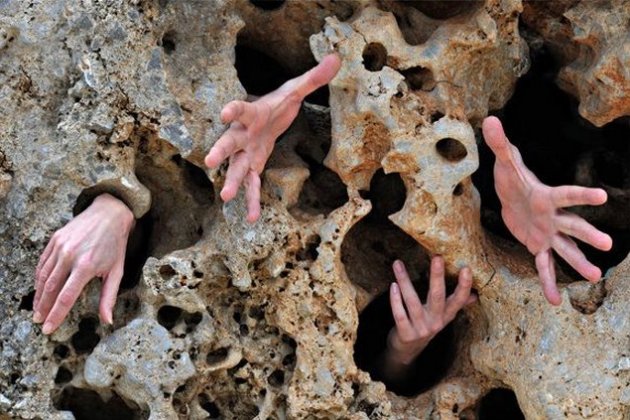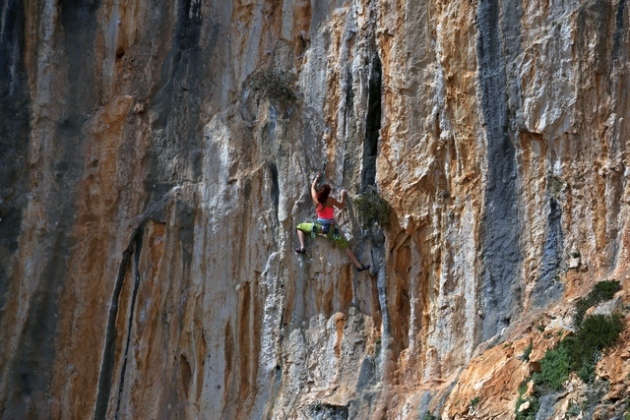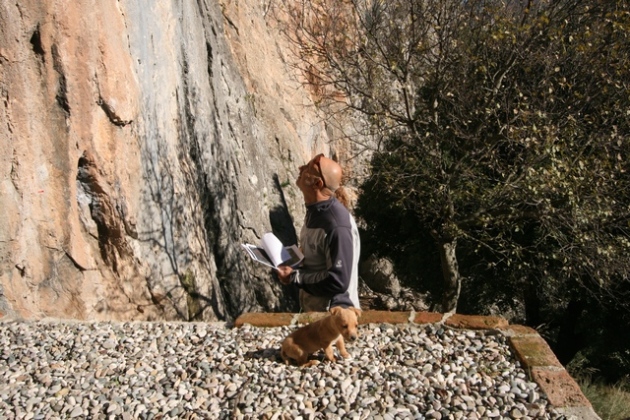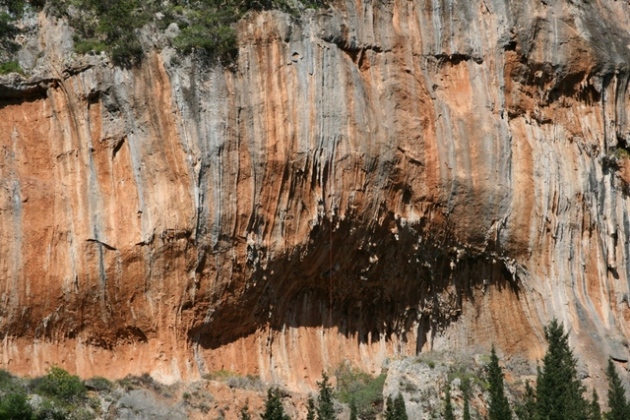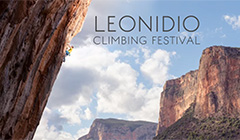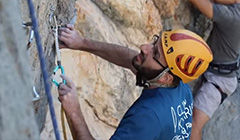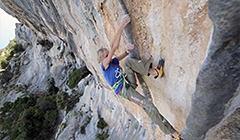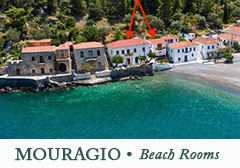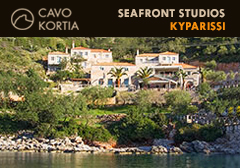Climbing seasons in Greece
Route descriptions and grades
How many quickdraws?
What rope length?
Crag etiquette
Equipping new routes
Guiding services in Greece
Accidents/Emergencies
Suggested rock trip itineraries
Greece is dominated by limestone, but the variety of climbing styles is a pleasant surprise. There are some notable exceptions, too, like the Meteora conglomerate towers or the granite of Tinos island. The main parameter we have considered when selecting which crags to include in the first edition of the Greece Sport Climbing guidebook (October 2014) is the quality of climbing. The emphasis of the Greece Sport Climbing guidebook is on sport crags mostly featuring single pitches, but with a few exceptional multi-pitch and mixed-style (sport/trad) routes added for good measure.
Climbing Seasons
Thanks to the country’s temperate Mediterranean climate, year-round climbing in Greece is a definite possibility. That said, most crags in Greece lend themselves ideally for spring and autumn climbing, when temperatures are moderate and climbing conditions are relatively dry. Summer climbing is possible at several Greek crags, even in Athens, as long as you follow the shade. Winter climbing can also be quite good, especially at most crags in the Peloponnese.
Route Descriptions and Grades
Sport climbing routes in Greece are graded according to the French grading system. Great efforts have been made toward consistent grading. However, since routes are being put up by climbers from all over Greece and the rest of the world (and some of these routes have yet to see their second ascent), a few are likely to need future re-grading. Don’t hesitate to share your feedback about routes and grades with us. In our route descriptions in the Greece Sport Climbing guidebook, we have tried to be succinct and to give a ‘feel’ for each route, without giving out too much beta that will spoil your onsight attempt.
How Many Quickdraws?
As a rule of thumb, the standard gear for sport climbing in Greece is 15 quickdraws. In the Greece guidebook, we make special mention of the exact number of quickdraws needed to climb a route only in the case of sparsely-bolted, multi-pitch routes, or in crags like Meteora, where the local bolting ethic is ‘minimalistic’ (so it’s good to know how run-out a pitch is before deciding to climb it). Generally speaking, most sport routes everywhere else in Greece are well-bolted. If in doubt about the number of quickdraws, if you are using the Greece Sport Climbing guidebook you can always check the length of the route: up to 20-25m you should need 10-12 QD; for 30-35m take all 15 QD. When a route requires more than 15 QD, it is noted in the text. That said, we always suggest bringing 25-30 QD to make the most of your climbing experience.
What Rope Length?
The standard single rope length for climbing in Greece is at least 60m (9-10.5mm), but with all the remarkable long routes (35-40m) equipped all over the country in recent years, bringing a longer rope is highly recommended. An 80m rope will suffice for virtually all long routes or extension pitches.
Crag Etiquette
These “Dos and Don’ts” are universal, so they apply to pretty much every crag in the world.
• Park your vehicle sensibly (even if it means parking further and walking extra). Don’t obstruct local drivers’ access to their homes, farms or other private property.
• Remove all valuables from your car (though car break-ins are not hugely common). Don’t push your luck.
• Follow established approach paths. Don’t try to take shortcuts through private property or wild nature.
• Mind your manners at the crag! Don’t shout, play music, yap on the phone, let your dog sit on other people’s ropes, let your kids run around screaming. It is extremely annoying, not to mention potentially dangerous.
• Take a climbing brush or old toothbrush along when you climb. Use it to clean your chalk/tick marks when you are done climbing.
• Pick up all trash before leaving the crag, including bits and pieces ‘accidentally forgotten’ by other climbers (food/coffee wrappers, straws, tissues, finger tape, etc.) Always have a couple of extra plastic bags in your backpack. Don’t leave anything behind.
• Quit smoking. Just kidding. But do pick up your cigarette butts, wrappers and cartons, please! Cigarette litter is of the worst kind: cigarettes are the most littered item in the world, cigarette filters take decades to degrade, their toxic residue is damaging to the environment, and littered butts cause numerous fires every year, some of them fatal. And please don’t smoke next to other climbers. It’s a no-brainer.
• Poop like a pro. Go far away (at least 100m from the crag and routes… and not on or near the approach path. You can hold.) Dig a small hole and position yourself over it. Release. Use your toilet paper/tampon/sanitary pad then put it in your plastic bag and take it with you. Cover the hole with dirt and/or stones. Now go send your project.
Equipping New Routes in Greece
Overall, there aren’t many restrictions when equipping new climbing routes in Greece. Nevertheless, we propose the following guidelines for safety and good practice:
• Always use stainless-steel bolts and hangers.
• Always use 304 or 316L expansion bolts, or glue-in bolts using epoxy resin.
• Always use bolts and hangers made of the same material. Never mix different metals!
• Always use hardware by a certified manufacturer of climbing equipment. Please avoid using homemade hardware.
• Always use bolts of at least 10mm in diameter and 86mm in length.
• Always drill a bit deeper than the length of the bolt, allowing the old bolt to be hammered out-of-sight into the rock during a future rebolting.
• Lastly, it is good to contact the local climbing community before equipping, and we would also appreciate an email with details about your new route.
More guidelines for the proper equipping of climbing routes in Greece can be found here.
Guiding Services
For a list of Greek mountain guides and the services each guide offers, please visit the webpage of the Hellenic Mountain Guides Association.
Accidents/Emergencies
There is no mountain rescue in Greece. Keep this in mind every time you go to the crag, and please act accordingly. In case of an accident, call 112 or 166 for an ambulance and get the injured person to the nearest road. Ask other climbers to help if you have to.
Suggested rock trip itineraries
If it’s your first time climbing in Greece, if you’re not very familiar with it, or if you are just need help planning your rock trip, below are some suggested itineraries for a one-or two-week climbing trip to Greece.
One week:
• Fly to Athens or Kalamata. Tour the Peloponnese and stop at the crags most suited to the season and your preferred grade range.
• Fly to Athens or Thessaloniki, or arrive via Igoumenitsa. Then, spend the week around Meteora and Pyli/Mouzaki (for some hardcore sport climbing).
• Fly to Athens, or arrive via Patras. Then, explore Varasova and the other Patras Area crags. The distances between crags are short, but the variety of climbing is enormous.
• Fly to Crete and try all three crags featured in the Greece Sport Climbing guidebook (Voulismeno Aloni, Plakias and Tersanas Cave). On your rest day, don’t miss seeing the world-famous Minoan Palace of Knossos or walking on the sand at Balos.
Two weeks:
• Fly to Athens or Kalamata. Tour the Peloponnese and combine it with visits to all four of its UNESCO World Heritage sites: Ancient Olympia, Mycenae, Epidaurus and Mystras.
• Fly to Athens or Thessaloniki, or arrive via Igoumenitsa. Start at Meteora and work your way south to Athens, then west to Patras, then to the rest of the Peloponnese.
• Fly to Athens. Go north to Meteora, west to Varasova/Patras, then tour the rest of the Peloponnese.
Approximate driving times between Greek crags:
• Athens-Meteora: 4.5 hrs
• Meteora-Varasova: 4 hrs
• Athens-Nafplio: 1.5 hrs
• Athens-Leonidio: 3 hrs
• Patras-Leonidio: 4 hrs
• Athens-Zobolo: 5 hrs




